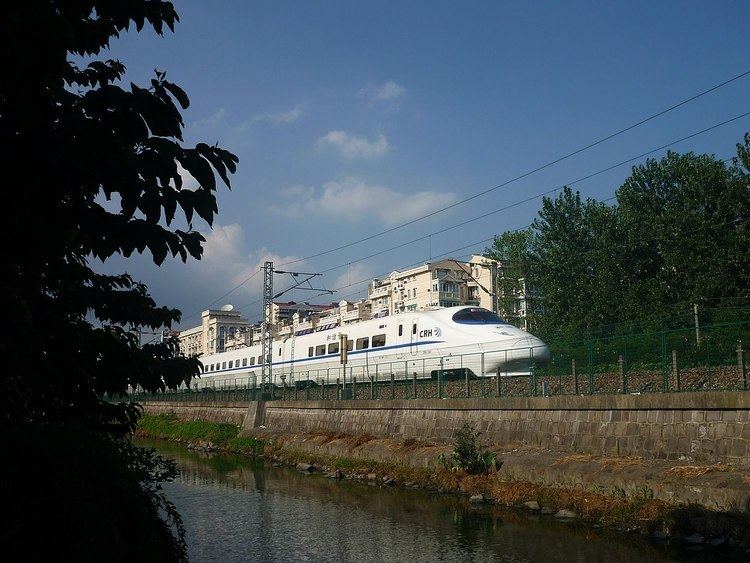Type Heavy rail Status Active Line length 147.32 km (91.54 mi) | System China Railways Stations 23 (14 active) Operator China Railway | |
 | ||
Track gauge 1,435 mm (4 ft 8 ⁄2 in) Terminis Ningbo, Xiaoshan District, Hangzhou | ||
The Xiaoshan–Ningbo Railway or Xiaoyong Railway (simplified Chinese: 萧甬铁路; traditional Chinese: 蕭甬鐵路; pinyin: xiāoyōng tiělù), is a double-track railroad in eastern China between Hangzhou and Ningbo in Zhejiang Province. Its name in Chinese, the Xiaoyong Line, is named after the railway's two terminal stations, Xiaoshan, a suburban district of Hangzhou on the southern bank of Qiantang River, and Ningbo, whose Chinese character abbreviation is yong. The line is 147.3 km (92 mi) long and was originally built in three parts in 1912, 1914 and 1936 and then rebuilt in 1959 and electrified in 2009. Cities along route include Xiaoshan District of Hangzhou, Shaoxing, Shangyu, Yuyao and Ningbo, all in Zhejiang Province.
Contents
Line history
The oldest section on the Xiaoyong Railway is the 18.19 km section between Ningbo and Cicheng, which entered into operation in December 1912. The Ningbo to Cao'e section, 78 km in length, followed in June 1914, and the Xiaoshan to Cao'e section was completed in October 1936. During the Second Sino-Japanese War in 1938, the railway line was dismantled to prevent its use by the invading Japanese. Following the end of World War II, the railroad bed was converted into a highway. In 1953, the railway was rebuilt in parts and completed in 1959 with the assistance of Soviet engineers. From 2002 to 2009, the line was electrified.
